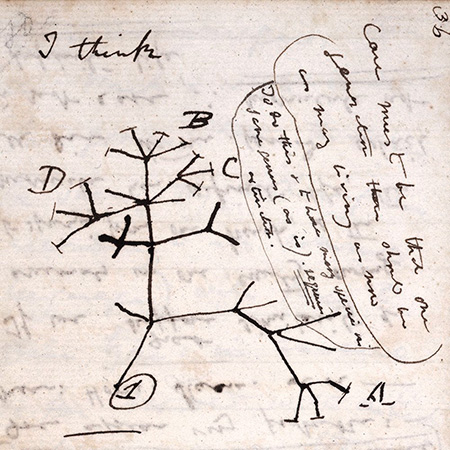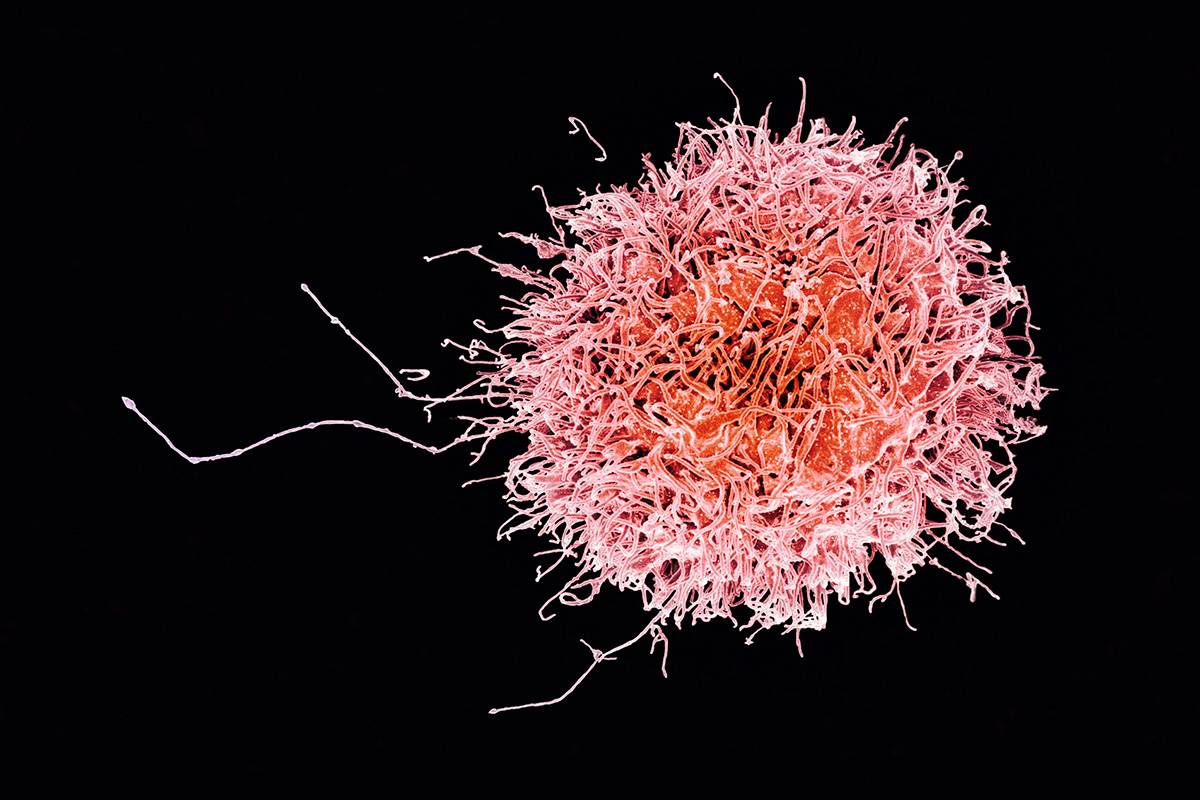On analogical knowledge
Metaphors in biotechnology discourse

During a period dominated by positivist thinking, metaphors seemed incompatible with science, at least for the most common manifestations of scientific discourse. However, this apparent transgression is now considered essential and even advantageous for the construction of knowledge. The terminology of specialised knowledge, like that from the field of biotechnology, undoubtedly contains metaphors. In the discourse related to scientific dissemination and the mass media, the use of metaphors is more original which makes them more attractive as strategies to increase the intelligibility of concepts and to stimulate layperson audiences. Thus, anthropomorphic projections are one of the types of metaphor which performs the best in the context of this type of discourse.
Keywords: metaphor, terminology, biotechnology, scientific discourse, knowledge dissemination.
The advantage of metaphors
Some readers might be wondering why we are reflecting on the use of metaphors in a monographic dossier devoted to biotechnology communication. This surprise betrays an understandable prejudice rooted in wide-ranging sectors of scientific culture and which both the fields of cognitive linguistics and of the philosophy of science have been gradually dismantling in recent decades (Brown, 2003). The concept of logical neopositivism, the search for precise language for use in science, proposed minimising the polysemy of natural language and the use of metaphors. However, many voices now recognise the usefulness of metaphors as very efficient epistemological tools for using analogical knowledge.
«Metaphors are authentic multipurpose tools for human communication»
In any case, as one can easily observe, the meaning of words and phrases is highly flexible, precisely because natural languages operate using ‘fuzzy sets’ with no exact demarcations. This characteristic has often appalled the gurus of neopositivism, who wanted to create an accurate language for science, to be used as an aseptic scalpel to dissect the anatomy of concepts. From this perspective, they loathed the imprecision of polysemic phrases and condemned metaphors to the deepest hell of ‘lacking rigour’. Despite this, language users have historically known how to extract an extremely effective elixir from this constitutive vagueness of meanings, thus making clear the instrumental power that metaphors have in the design of new realities, to explain obscure concepts, or inventively establish analogical networks to enhance knowledge.
In fact, the concept of the metaphor and its enormous capacity for configuring ideas, imaginative suggestion, argumentative strength, and persuasive power over audiences was defined in old rhetoric and has been recognised for millennia (Pujante, 2003). Metaphors not only spread their majestic wings in the poetic universe, but rather, they can put a clarifying spotlight on ideas, help in the discovery of new and often moving thought horizons, or evoke adhesion to an ideological perspective within any type of discourse. Therefore, they are authentic multipurpose tools for human communication.

Metaphors are not only mediated by verbal language, but also through icons of all kinds: from allegorical images to conceptual maps or abstract diagrams. Charles Darwin deliberated whether to depict his theory as a tree diagram – his eventual choice – or to design it as a marine coral in which neither verticality nor chronological precedence were considered. In the picture, a sketch made by Darwin in 1837. / Cambridge University Library
They can have the precision of the swift turn of a hawk following its prey, or fly at ground level, unnoticed, and imbue us with a particular way of perceiving the world without us consciously noticing, just as sleep falls on an unsuspecting driver because of the fatigue of their journey. They can make us look at the moon and see a lustful woman with hard tin breasts (Romancero gitano) as in one of Lorca’s metaphorical equestrian leaps (1966, p. 69); or quietly make us perceive Kuwait as a small, and thus innocent and helpless country facing the powerful Iraqi enemy invading it during the first Gulf War, when in fact that «small country» was an economic power with strong allies and which lacked any sort of democratic system. In the first case, the metaphor seduces us like lightning in the night; in the second, as studied by George Lakoff (1991) at the time, it numbs our critical capacity and drags us, chloroformed, towards an ideological stance. These are classic examples of the two ends of the broad and nuanced spectrum, but should we dig through the publicity, electoral speeches, journalism, cybersphere, or everyday conversations – or even the superb temple of science and technology – many more can be found all around us.
Science and metaphors
If we think carefully, neither colloquial nor scientific discourse – not even terminology itself – are immune to metaphorical mechanisms. Nor are the journalistic texts that disseminate technological achievements and must make them understandable to readers. While strict scientists can try to forswear metaphors, at the moment of truth they still need them, for example, to explain the structure of an atom (as ‘satellites’ orbiting around a nucleus), a cell (the original ‘cell’ of a honeycomb), or electrical current (where electrons ‘flow’ like water on a riverbed).

Blue biotechnology (marine biodiversity) / Tiphaine, Unsplash
Since the 1980s, cognitive linguistics has highlighted the omnipresence of metaphors and their indisputable usefulness for articulating our knowledge about life and the world. Indeed, metaphors filter perceptions and mental representations, and we could even say that these interpretations contribute to their creation from prefabricated pieces, i.e., the conceptual categories designed by our metaphorical thought to facilitate the task of thinking about reality. Thus, we have conceptualised what a human being is, and we can metaphorically project the «human person» category onto animals (as in medieval bestiaries or classic cautionary tales), over feelings (Cupid with his quiver of laced arrows, the Furies of passion, the demon of jealousy), or over the Earth we inhabit and, too often, damage (the Mother-Earth goddess Gaia, who naturally regenerates). Indeed, anthropomorphisation is a very old strategy for passing on knowledge.
However, metaphors are not only conveyed through verbal language, but also through icons of all kinds: from allegorical images to conceptual maps or abstract diagrams. Recently, Eduardo de Bustos (2014) carried out a detailed study analysing an illustrating case of the graphic metaphorisation of the story of science. Specifically, Charles Darwin’s depiction of his theory of evolution. Indeed, we know that Darwin had many doubts regarding how to create a graphic representation of his ideas. He deliberated whether to depict it as a tree diagram – his eventual choice – or to design it as a marine coral, which did not consider verticality or chronological precedence. Each of these iconic organisational representations altered his understanding of his own concepts through two different visual metaphors with different «skylines». The layout of the strokes on paper changed and, consequently, the relationships between the concepts, which articulated his entire theory, also changed. The conclusion: science is not indifferent to the metaphors it uses, not even to graphic metaphors.
The semantic motivation of terminology
Returning to a strictly linguistic framework, we know that scientific terminology very often originates in metaphors which are themselves rooted in the language the term was conceived in, and that – in the process of «terminologisation» – these terms increasingly obscure until they become completely opaque. That is, until some voices, usually members of the scientific community or science popularisers, decide to resurrect this etymology. A term like iatrogenesis (a disease resulting from a medical treatment) can be seen purely semantically: in other words, it becomes clearer when one looks for its Greek etymon, iatrós, meaning «medical», although in this case the metaphorical component is tenuous or almost inexistent. It is easier to notice the metaphorical component in the process of cell division known as mitosis, derived from the Greek mitos, meaning «thread», and which refers to the thread-like appearance of chromosomes during metaphase. Another example is the term apoptosis, which we can paraphrase as «programmed cell death» or «cell suicide» and which leads us to the word’s original meaning, «fall».
«Neither colloquial nor scientific discourse are immune to metaphorical mechanisms»
In summary: this phenomenon is easily found in many scientific terms and the field of biotechnology is no exception. Indeed, a process known as catachresis eventually occurs; linguists use this term to refer to metaphors that have fossilised to become the irreplaceable proper name for an entity or process. Terms such as apoptosis, formed via catachresis, can then be substituted or accompanied by new, ordinary-language metaphors that help us to unravel and understand their meaning. Nonetheless, as the use of these metaphoric expressions becomes routine, they become the subject of a new process of terminologisation which conventionalises them as a denomination, even though they will, by then, be more understandable to laymen in the field. A good illustrative example is epidermolysis bullosa, also known as butterfly skin because affected patients’ skin is so fragile to the touch.
There are also some terminological neologisms with a similar «understandability stage», for example, in the field of regenerative medicine, cells that can divide and differentiate into various specialised cells and that can also self-renew. The most commonly used term for these cells in English is «stem cells», sometimes translated as «root cells» which activates a figurative representation of the phenomenon based on the idea of plant growth. However, in other languages including Catalan and Spanish, the metaphorical process resorts to animal reproduction and uses terms such as células madre («mother cells», the most common translation) or células progenitoras («progenitor cells»). The metaphor can even be extended to the semantic field of animal reproduction, thus providing the terms células hijas («daughter cells») or linajes celulares («cell lineages»). Hence, what we see from observing these facts is that metaphors are a powerful knowledge tool that, through analogy, helps us to see things through a coloured lens and allows us to understand the biological reality with a creative approach which also makes it easier for us to retain and recall this information.

Red biotechnology (medicine) / ILRI, David White
This latter identifying, or mnemonic, function is sometimes achieved by assigning chromatic values. In this way, we often talk about green chemistry (that is, environmental) or classify the different types of biotechnology by assigning colours to them: green (for the agricultural sector), red (medicine), white (industry), blue (marine biodiversity), etc. Here, the chromatic range allows us to identify several typologies using colours which are metonymically associated with certain fields of experience. Indeed, we now tend to think that metaphors (which operate by similarity) and metonymy (which function by proximity to or contiguity with our experience of the world) are intimately and perhaps even, symbiotically, related. Metaphor and metonymy are two semantic projection mechanisms that very frequently amalgamate. Thus, literal content is used to evoke another different idea in the imagination.
Many scientific (or parascientific) denominations find semantic motivation – that is, they gain clarity – through the use of evocative expressions. For instance, in the case of transgenic farming, genetic promiscuity, DNA libraries, or mosaicism (the existence of cells with different genetic and chromosomal content within the same organism, similar to a mosaic). Or the so-called cri du chat syndrome or cat-cry syndrome, a rare disease that can be recognised because the affected child cries and screams in a very high-pitched voice. In a recently published interview with a scientist, the author offers a repertoire of comparisons and metaphors for the field of biotechnology: nanopores are seen as micro-perforated supports to «screen» nucleotides, which work in the same way as «fruit sorters». We can also find «gatekeeper» proteins, a molecular «sieve», and an achromatic «spindle», among others (Borja, 2016, p. 82).
The case of the circadian rhythm, biological clock, or internal clock, is more complex: in particular, the details of its molecular mechanisms contributed by Jeffrey C. Hall, Michael Rosbash, and Michael W. Young, which won them the Nobel Prize for Medicine in 2017. Firstly, the term circadian originated in a Latin etymon (comprising circa and dies, i.e., «around the day»), but this is hidden to most speakers. The circadian rhythm is a biorhythm that determines behavioural patterns and corresponds to a 24-hour cycle. It is generally associated with clocks, as artefacts which indicate time, and this is the key that allows many people to understand the hidden metaphor. The idea (and the mental image) of a clock articulates our understanding of the phenomenon, so we can say that jet lag (after a long-distance flight) is a nightmare because it «slows down» or «speeds up» the ticking of our biological clock; or that we need to «reprogram» our daily biorhythm because it has desynchronised because the machinery of the artefact has been damaged. In this way, the image of a clock creates knowledge, allowing us to visualise and understand, for instance, sleep disorders produced after a trans-oceanic journey or when someone works night shifts.

Natural killer cells are a type of lymphocyte that which form part of the innate immune system. They are responsible for destroying tumour cells or cells infected by viruses. The image shows a coloured photograph of a human natural killer cell taken with a scanning electron microscope. / NIAID, NHI
Science dissemination and media discourse
Leaving aside communities of expert discourse, and rather, looking at popularisation, science education, and media discourse, metaphors multiply like rabbits to adorn texts written for the layperson to facilitate the comprehension of abstract concepts and attract the general public’s attention. Thus, cloning can be presented as an attempt to «patent» a living being or produce babies with a warranty to be free of health-related problems, with the result being «monstrous» or «miraculous» according to the communicator’s ideological perspective. We can easily interpret expressions like «plant stress», references to how the chrysalises of cabbage butterflies are «protein factories», or that baculoviruses «hijack» caterpillar cells. Furthermore, according to information published by several media outlets, algae can be «persuaded» to generate electricity, a cell can develop «depressive behaviour», and bacteria «invented» sex. These metaphorical designations are no longer conventional paraterminological clichés, but rather, are discursive discoveries that promote informative fertility and aim to inspire originality in journalistic writing. Of course, the more that moral or ideological implications come into play, the more explosive the metaphors: man, for instance, dares to «play God».
Moreover, metaphors that project the cognitive domain of human behaviour over that of biological function are generally very effective because they activate an anthropomorphising mechanism that helps us to understand biological processes sub specie hominis, in other words, from our own perspective as human beings. The previously mentioned example of apoptosis, or «cell suicide», is very relevant in this sense. The following fragments from a science popularisation text explain the phenomenon with metaphorical resources that push against literary frontiers:
[Apoptosis] is a radically altruistic act, an extreme sacrifice for the common good of the rest of cells, and on which our own survival depends. […] A cell becomes sickly because it is infected by a particular virus. A natural killer cell patrolling the area attaches itself to the cell, connects to it with its receptors, recognises the infection state of the cell, and triggers the apoptosis process. Basically, it «convinces» the cell to commit suicide, which is not very difficult because the motto for many cells is «better dead than infected». When a cell initiates the apoptosis process, the first thing it does it separate itself from the rest of its companions. (Samper, 2010)
On the other hand, we know that cancer, dreaded and accursed in the collective imagination, is a very powerful attractor that provokes of all sorts of metaphorical images which are often related to war or sports (Domínguez & Sapiña, 2016). In a recent and very well-known book, The emperor of all maladies, this disease is depicted in economistic terms, as a sort of overproduction crisis:
We tend to think of cancer as a «modern» illness because its metaphors, of fulminating growth– growth unstoppable, growth tipped into the abyss of no control. Modern biology encourages us to imagine the cell as a molecular machine. Cancer is that machine unable to quench its initial command (to grow) and thus transformed into an indestructible, self-propelled automaton. (Mukherjee, 2014, p. 63)
I will make yet another point to help us gauge the extraordinary weight of the analogous thinking underlying metaphors: the case of so-called biomimetics, which we can define as consideration of the structure and function of certain biological systems as models that are useful for designing and engineering materials and machines. It is an effort to design devices inspired in biology, in beings, and in natural processes. In this sense, a building’s thermoregulation may copy the patterns of a termite mound; the study of the aerodynamic design and hydrophobic composition of shark skin has contributed to the production of more effective bathing or immersion clothing; we have reusable adhesive tape that imitates the grip of a chameleon’s feet; paints have been created that repel water and dirt in the same way lotus flowers do. Et sic et cetera.
«Science is not indifferent to the metaphors it uses, not even to graphic metaphors»
Here, the analogous projection starts by examining biological realities and is then directed towards human constructs, in the opposite way to many of the aforementioned examples. However, in addition, it must be noted that this is not merely a cognitive process, but that it also has practical engineering applications. Then, analogy is not simply a frenzy of creative thinking, beyond that, it also shows signs of unprecedented usefulness. All things considered, this is yet another benefit derived from our passion for playing with metaphors.
Borja, J. (2016). Sobre l’alquímia de la vida. Conversa amb Xavier Vendrell. Benicarló: Onada.
Brown, T. L. (2003). Making truth. Metaphor in science. Urbana i Chicago: University of Illinois Press.
De Bustos, E. (2014). Metáfora y argumentación: Teoria y práctica. Madrid: Cátedra.
Domínguez, M., & Sapiña, L. (2016). Cancer metaphors in sport news: The match that must be won. In P. Ordóñez-López, & N. Edo-Marzá (Eds.), Medical discourse in professional, academic and popular settings (pp. 149–175). Bristol, New York, & Ontario: Multilingual Matters.
García Lorca, F. (1966). La imagen poética de don Luís de Góngora. In F. García Lorca, Obras completas (pp. 62–85). Madrid: Aguilar.
Lakoff, G. (1991). Metaphor and war: The metaphor system used to justify war in the Gulf. Peace Research, 23(2/3), 25–32.
Mukherjee, S. (2014). El emperador de todos los males: Una biografía del cáncer. Barcelona: Debate.
Pujante, D. (2003). Manual de retórica. Madrid: Castalia.
Samper, E. (2010, 19 July). Apoptosis: El suicidio celular que nos mantiene con vida (I) [blog entry]. Retrieved from http://medtempus.com/archives/apoptosis-el-suicidio-celular-que-nos-mantiene-con-vida-i/





